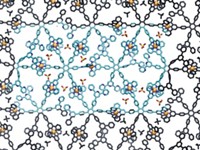Advertisement
Grab your lab coat. Let's get started
Welcome!
Welcome!
Create an account below to get 6 C&EN articles per month, receive newsletters and more - all free.
It seems this is your first time logging in online. Please enter the following information to continue.
As an ACS member you automatically get access to this site. All we need is few more details to create your reading experience.
Not you? Sign in with a different account.
Not you? Sign in with a different account.
ERROR 1
ERROR 1
ERROR 2
ERROR 2
ERROR 2
ERROR 2
ERROR 2
Password and Confirm password must match.
If you have an ACS member number, please enter it here so we can link this account to your membership. (optional)
ERROR 2
ACS values your privacy. By submitting your information, you are gaining access to C&EN and subscribing to our weekly newsletter. We use the information you provide to make your reading experience better, and we will never sell your data to third party members.
Materials
Thick-And-Thin Nanowire Segments
A new electrochemical method yields nanowires with alternating dense and porous sections
by Mitch Jacoby
April 19, 2010
| A version of this story appeared in
Volume 88, Issue 16
A simple electrochemical method can be used to prepare semiconductor nanowires that feature segments of alternating density and size along the wire’s length, according to a paper published in ACS Nano (DOI: 10.1021/nn901661z). Multisegmented nanowires could be used as nanometer-scale bar codes in biodetection applications or as basic components of optoelectronic devices that exploit the wires’ periodic properties. Prior studies have led to multistep procedures for preparing nanowires with alternating segments of dissimilar materials—for example, two different metals, a metal and a semiconductor, or alloys of various compositions. Nava Shpaisman, Uri Givan, and Fernando Patolsky of Israel’s Tel Aviv University have now devised a cyclic voltammetry method for growing CdSe nanowires in which uniformly sized dense segments of the material are separated by shorter uniformly sized porous segments that are less dense. The technique, which is based on delivering a single electrodeposition solution to a porous membrane, relies on computer control of the voltammetry parameters to tune the segment lengths. Cadmium metal, which codeposits with CdSe, is removed during voltage cycling, thereby forming the porous segments.





Join the conversation
Contact the reporter
Submit a Letter to the Editor for publication
Engage with us on Twitter